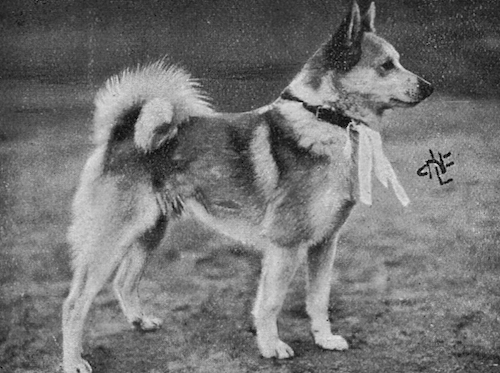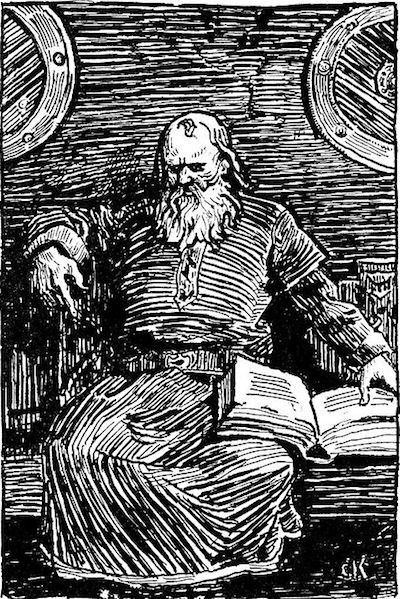
He was a historian, poet, author, and politician. He was also a successful merchant, farmer, and (winkie winkie), said to be a ladies’ man. He was elected twice to his country’s parliament, married an heiress, and had many children, but only five survived to adulthood. Sadly, he was felled by a political assassination, but his legacy endures. In his biography, only the word “chieftain” hints that he lived long ago. His name is Snorri Sturluson, and he died in 1241.

Woodcut of Snorri Sturluson from Wikipedia
Snorri Sturluson immortalized Kings of Norway in his writings, but our interest in Sturluson stems from his mention of a dog in his Viking sagas that he described for its role and abilities rather than its appearance. Many cynologists believe Sturluson’s mention may well have been the first reference to the ancestors of the Norwegian Buhund.
More than one source indicates that the term, “buhund,” ‘wasn’t used for a specific breed until 1968 when it appeared in J. Ramus’s book, A Sample Of Words From Norderhov, and it was likely taken from the Norwegian word, “bu,” meaning homestead, farm or house, and “hund,” the word for dog.
After Norway got its independence in 1905, Norwegians embarked on building a strong new country and celebrated all things Norwegian. As happened in Japan, a wave of nationalistic pride in Norway lead to a renewed interest in native breeds, and the Buhund was one of them.
Fast forwarding to the 1920s brings us to Jon Sæland, Norway’s state-counsel and breed fancier. He started to promote the breed by participating in exhibitions at livestock fairs, and documented breeding programs helped established the Buhund as a defined breed. He discouraged crossbreeding, fanned enthusiasm, and for this he’s been described as the person who saved the traditional Buhund and nudged it into modern times. Up until Sæland, common folk had been using the word, buhund in a way analogous to using the word, “mutt.” Sæland himself used salty language when describing some of the dogs that people referred to as a buhund because as he saw it, these dogs really were mongrels and not worthy of the name, buhund.
Saeland put together the first Buhund show held in Jaeren, Norway, and this was followed by the first breed standard in 1926. The Norsk Buhund Club was founded in 1939 with Toralf Raanaas installed as the first President of the club and together, Sæland and Raanaas selected the best dogs for breed type and working ability. With the establishment of the club, the notion of the Norwegian Buhund as a viable purebred picked up steam. To our knowledge, today about one hundred to one hundred fifty Norwegian Buhund puppies are registered annually by the NKK, and their popularity continues to increase in their native country.
Image of Flink, the first Buhund registered in the Buhund registry, and the dog Sæland regarded as the finest specimen of his time. Flink was from a farm in Gjesdal, Rogaland, Norway, and though he was said to have had a small portion of Scottish sheepdog in him, Sæland didn’t see this as a problem, and indeed, felt that Flink still represented more than enough of the best of the characteristics and qualities handed down through old stock. He was the model of the 1926 breed standard which Sæland confirmed in the pedigree register of 1938.
